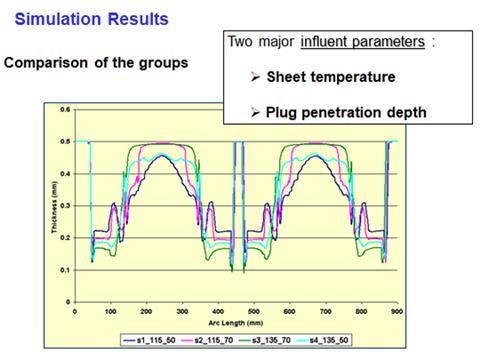“If you always do what you’ve always done, you’ll always get what you always got.” – Henry Ford.
“There is a better way for everything – find it.” – Thomas A Edison.
The above statements are as applicable today as they were 100 years ago. We must continuously innovate – or someone else will. Everywhere we can see how 21st century computing power has driven innovation and reduced costs – but not everywhere in the plastics industry, as David Russell reports.
Computer simulation has been a fundamental step in design for injection moulding for more than 40 years. But, even with the advent of Industry 4.0 principles, the massive benefits seen through simulation in the injection sector have not been replicated in blow moulding or thermoforming – where it is sometimes seen as a cost, rather than a benefit.
Product strength in ‘closed mould’ plastics processes is achieved by controlling the wall thickness within the mould. But in these two, massive tonnage, processes the thickness is dependent on how the material will stretch during moulding. Experience has always helped when predicting stretching, but for many complex 3D designs, experience is not enough – modern computing power must be used to optimise cost and performance.
Simulation software, when used to optimise design, tooling and heating, will improve technology, efficiency and competitiveness. Organisations who have adopted simulation are reaping the benefits in new products by:
a) reducing design time and ‘time-to-market’,
b) avoiding the delays, cost and hassle of tool modifications,
c) identifying (and fixing) quality issues,
d) reviewing existing process settings – resulting in cost reduction.

And, once organisations gain experience in simulation, it is being used to optimise existing process settings to reduce cycle times and costs. One packaging thermoformer investigated the effect of varying its machine settings by +/- 15 per cent. This meant looking at the effect of 16 variants – something which would have incurred an inordinate amount of people time, machine time and wasted materials. So it turned to simulation to carry out the investigation by ‘batching’ the variables. Within a few hours it was able to compare the different thickness outcomes and focus on better settings. For zero cost it took 10 per cent out of cost – saving 12.5 tonnes of sheet annually. (See picture attached to e-mail)
In the blow moulding sector, simulation software can automatically optimise the shape and temperature profile of preforms and parisons (see picture attached to e-mail)
Also, of increasing importance – prior to tooling – is the use of finite element analysis (FEA) to check that products will meet performance criteria. But the accuracy of FEA is dependent on the accuracy of the data it is fed with. ‘Black-art’ predictions of (meaningless) ‘nominal thicknesses’ will no longer be enough for FEA – computer simulation will be needed to provide the detailed thicknesses across the whole product.
Consultant, David Russell, was instrumental in introducing the innovative High Pressure Forming technology to Europe 30 years ago and wishes he had been able to use simulation back then in design discussions with customers and to better identify quality issues (e.g. thinning) before tools were ordered. Russell now promotes innovation via simulation and state-of-the-art heating.











